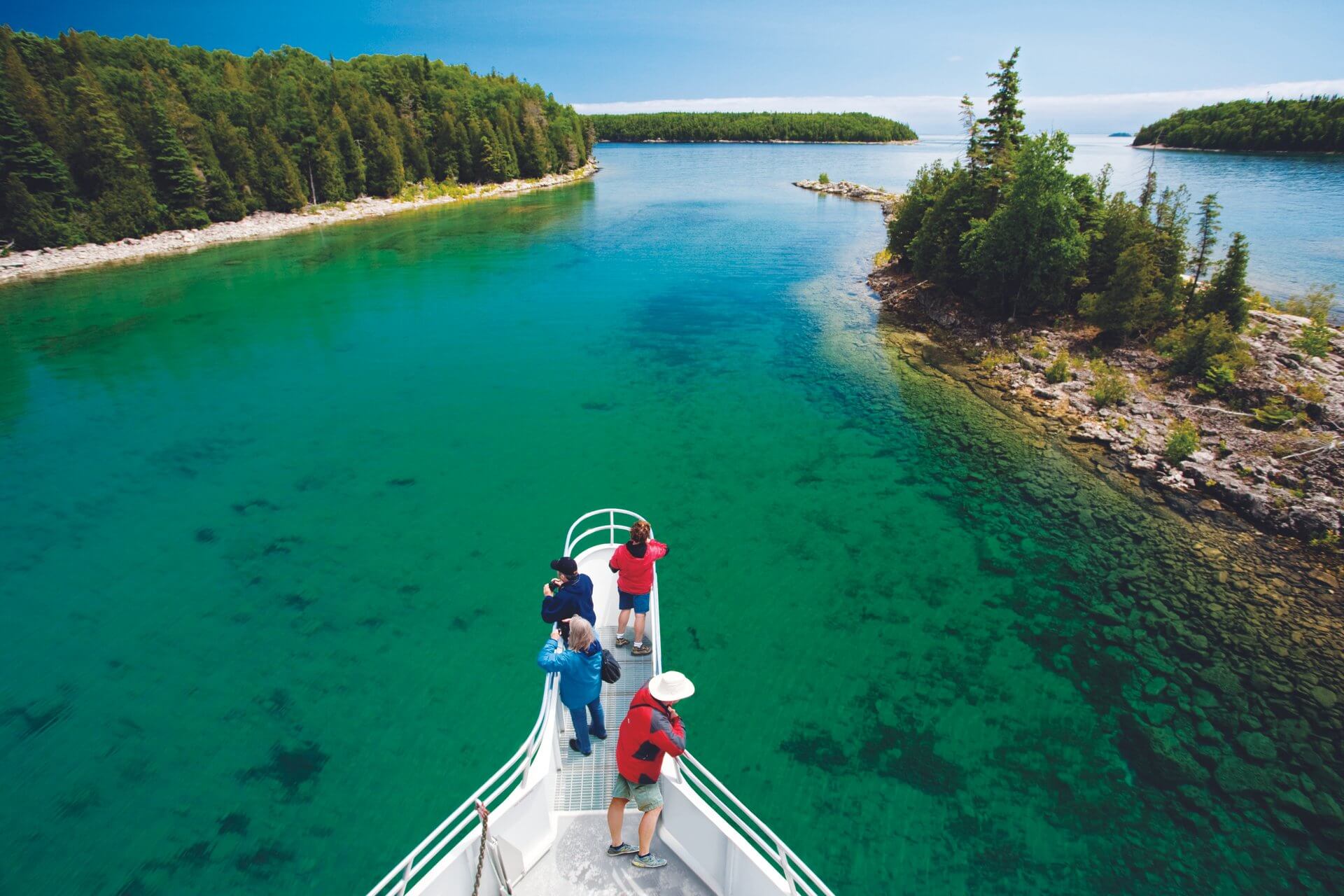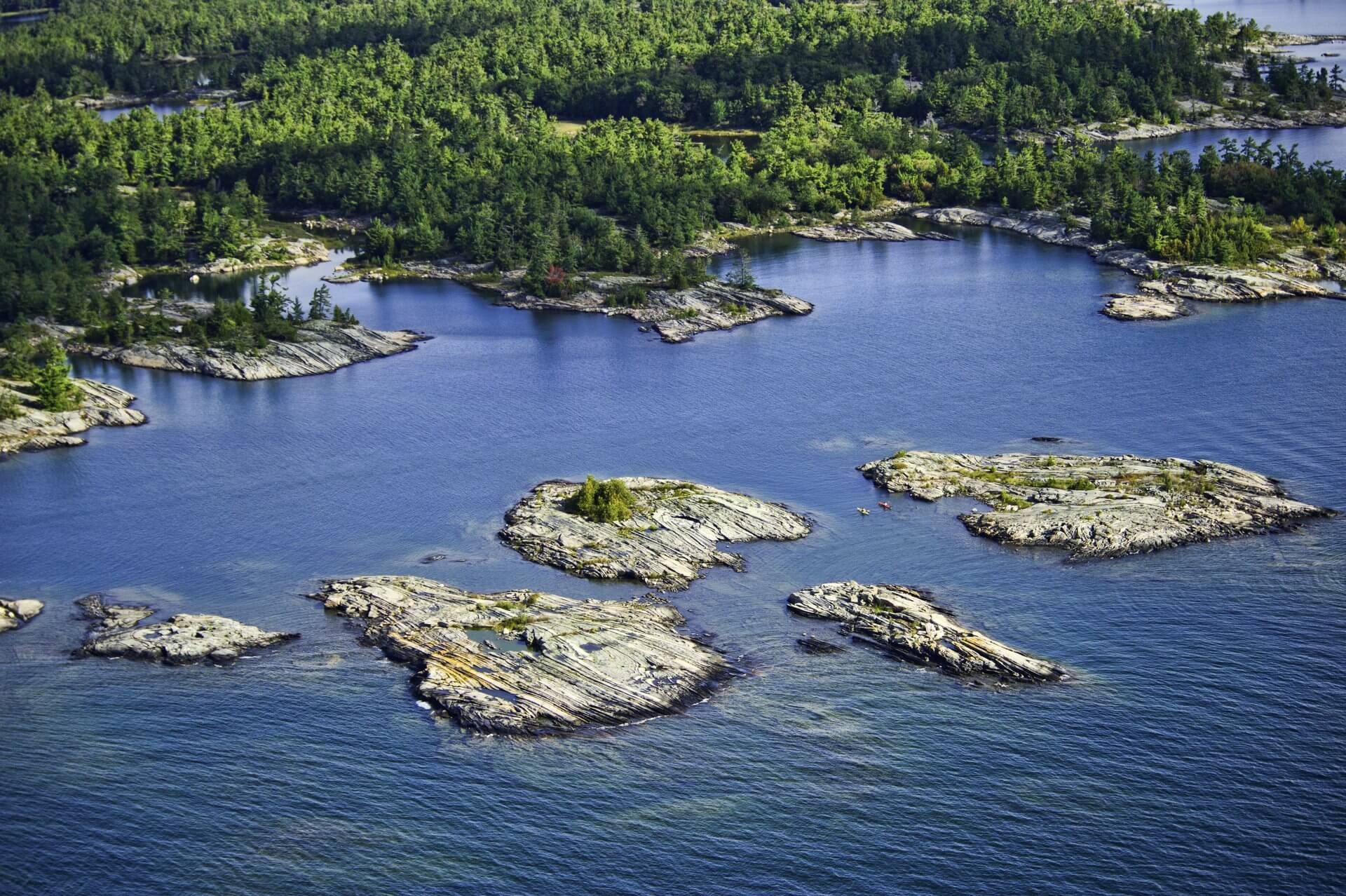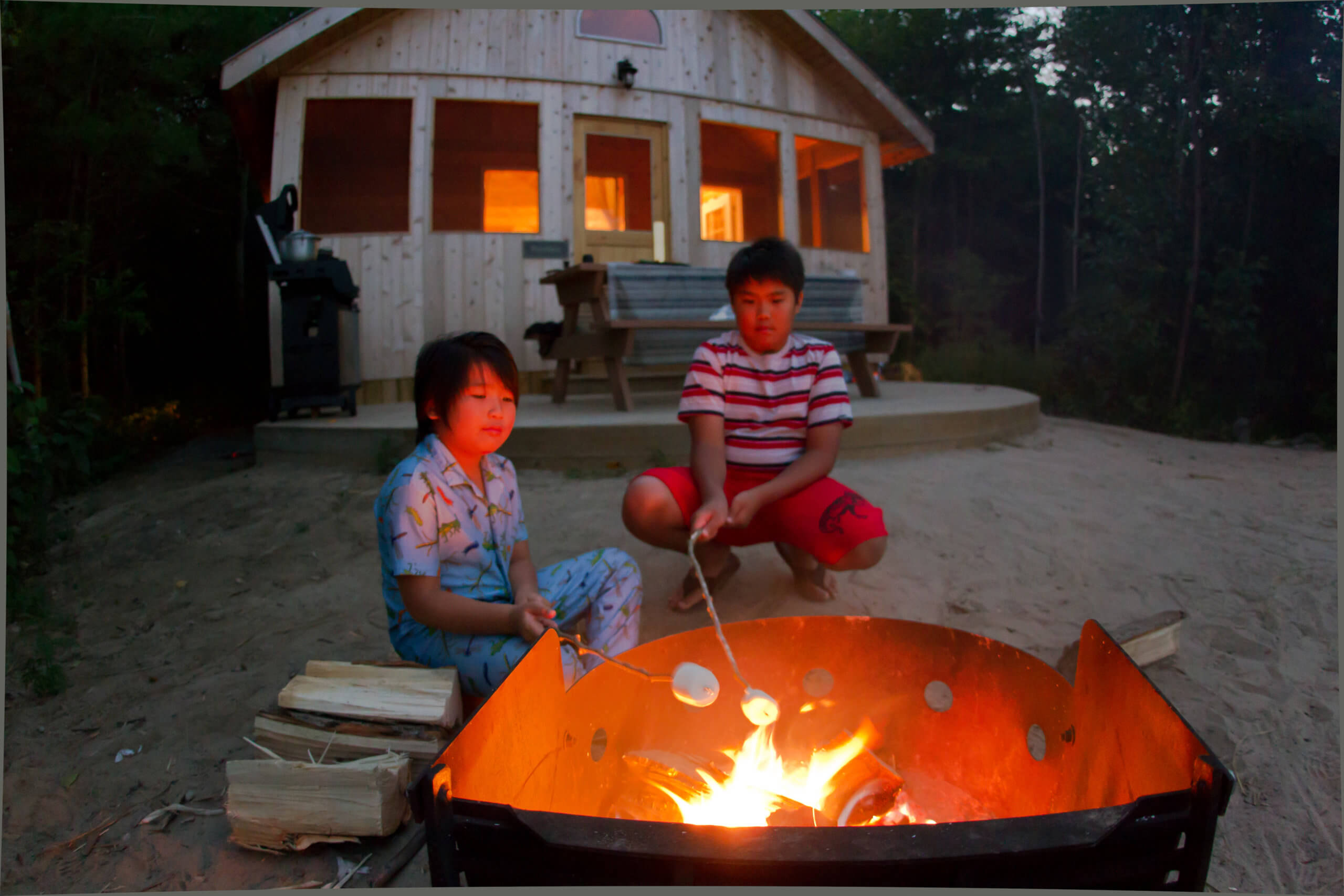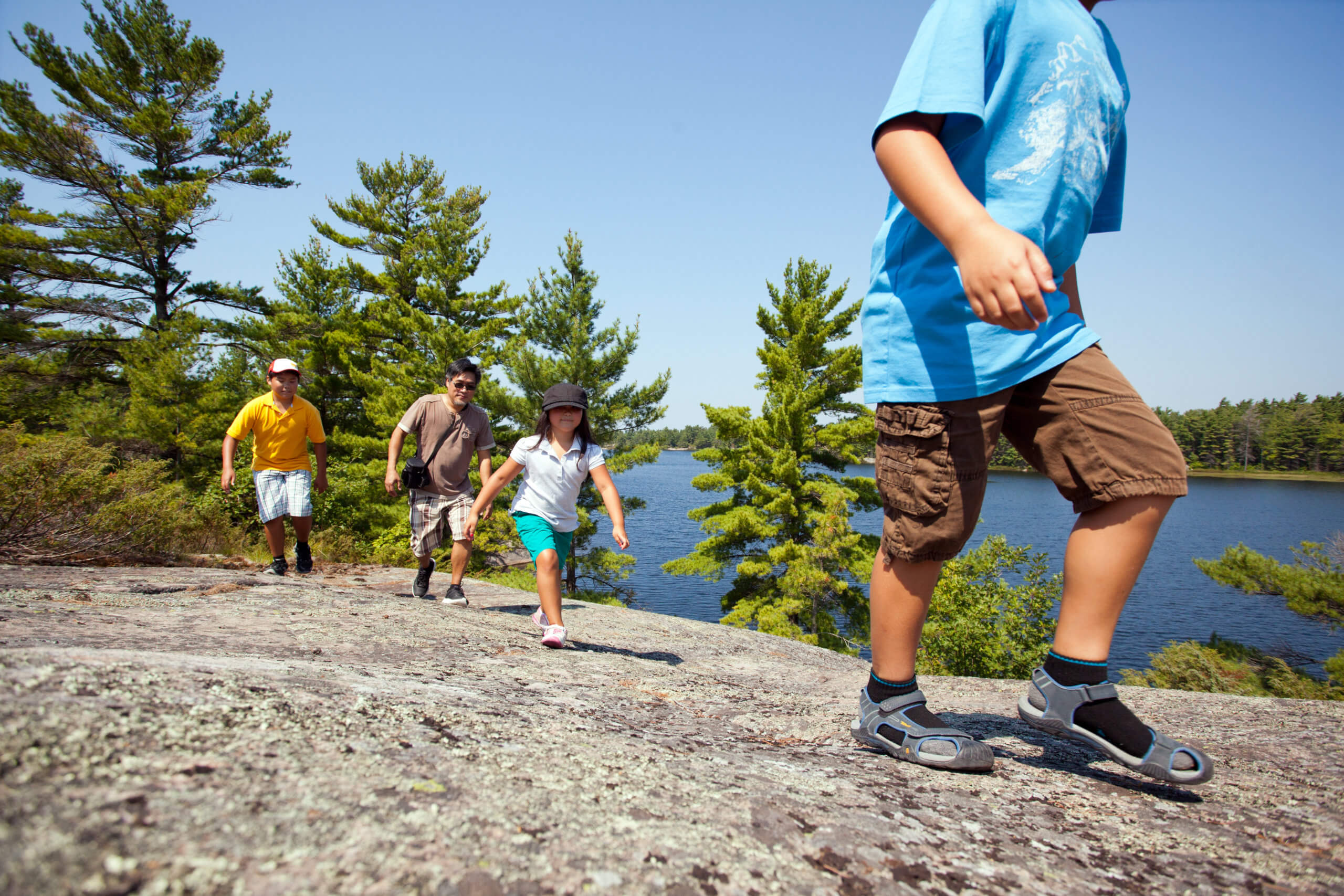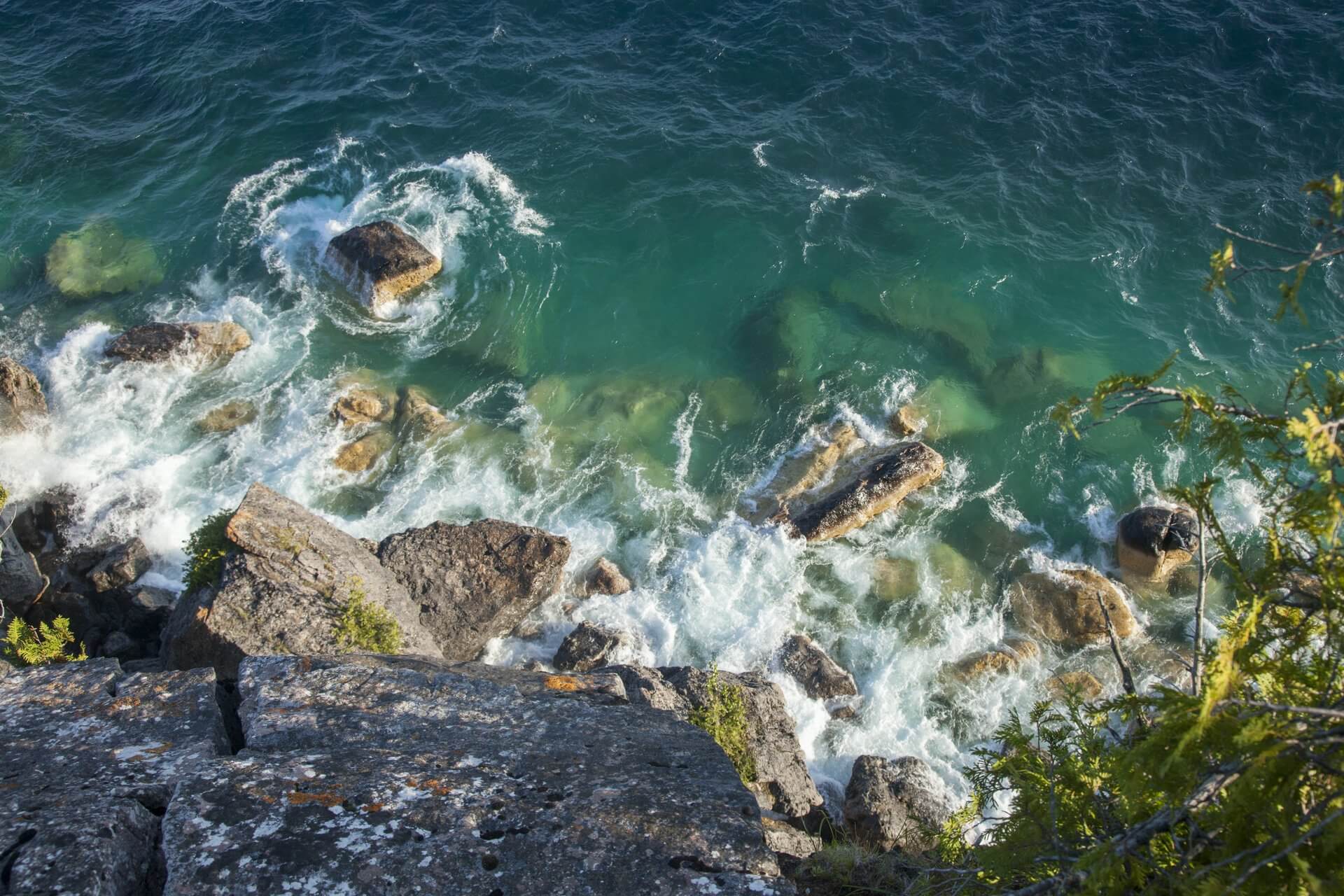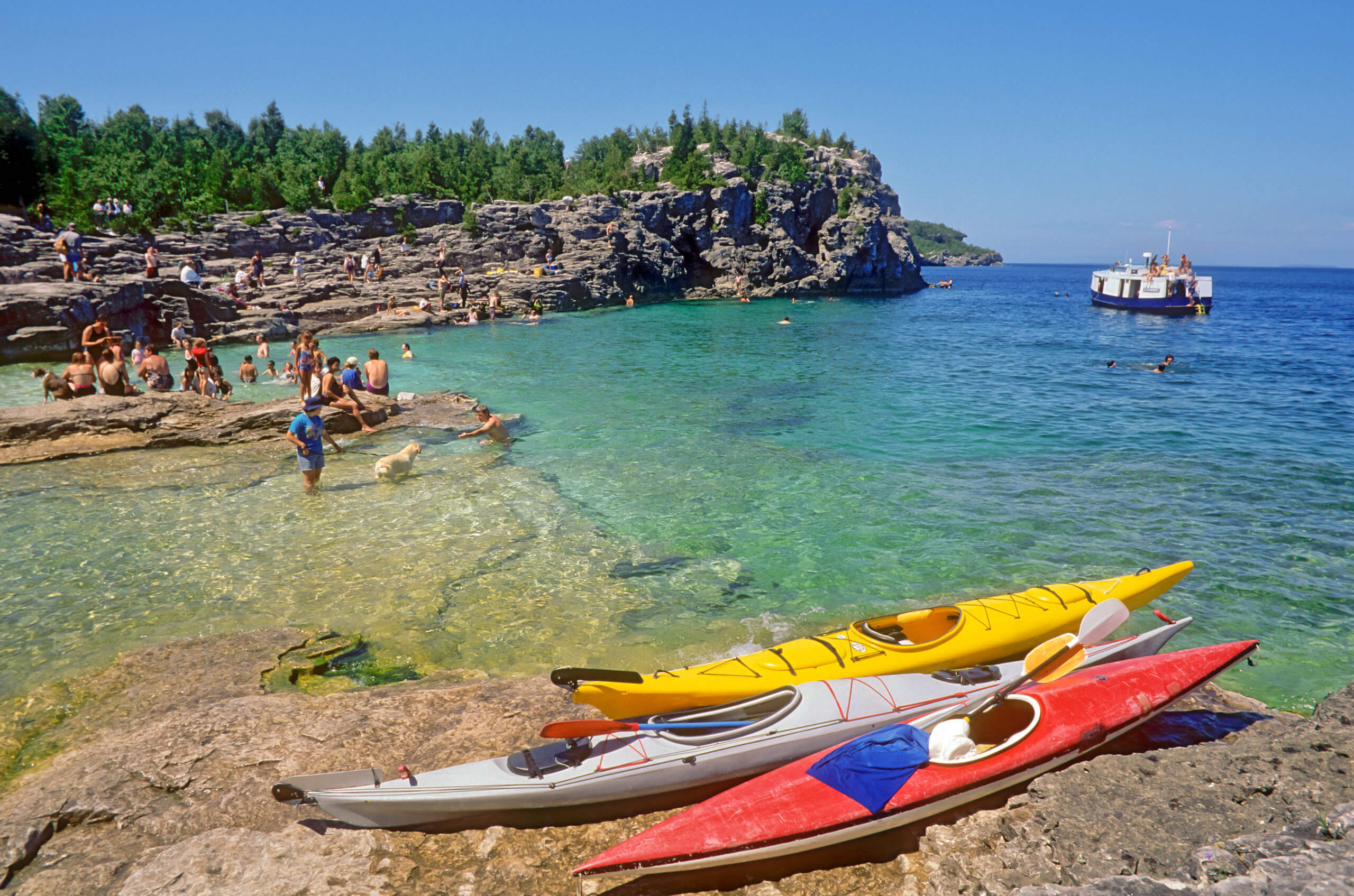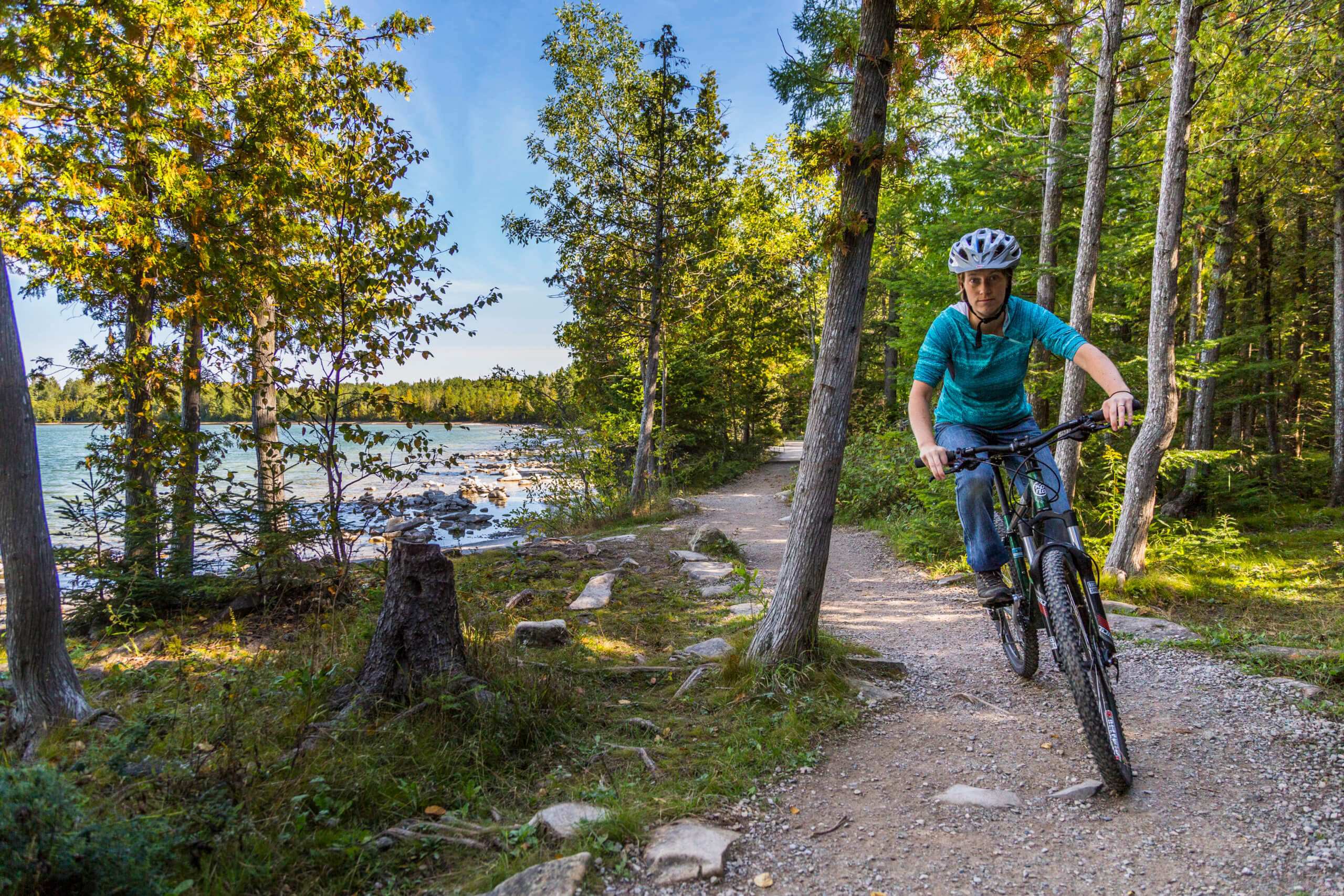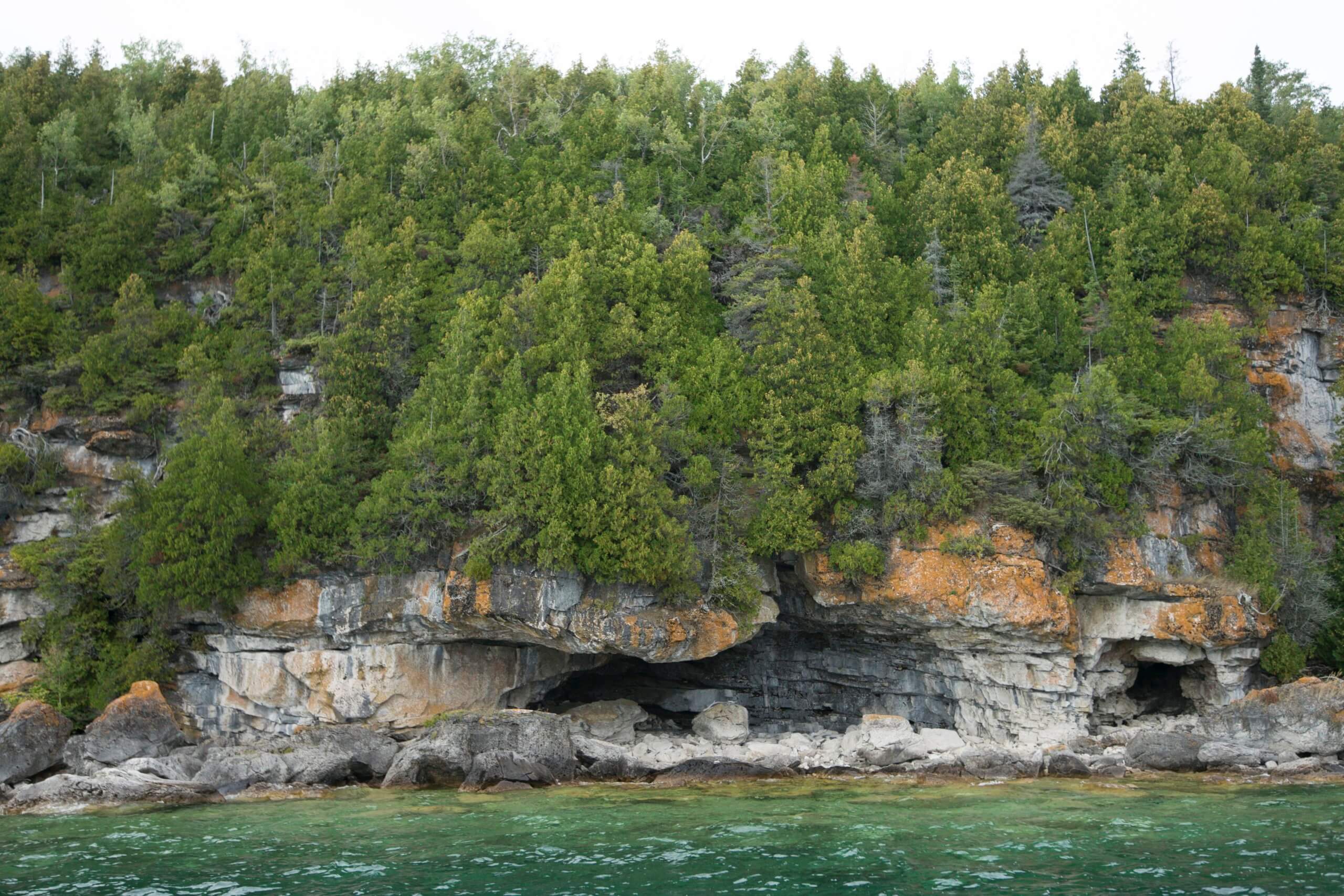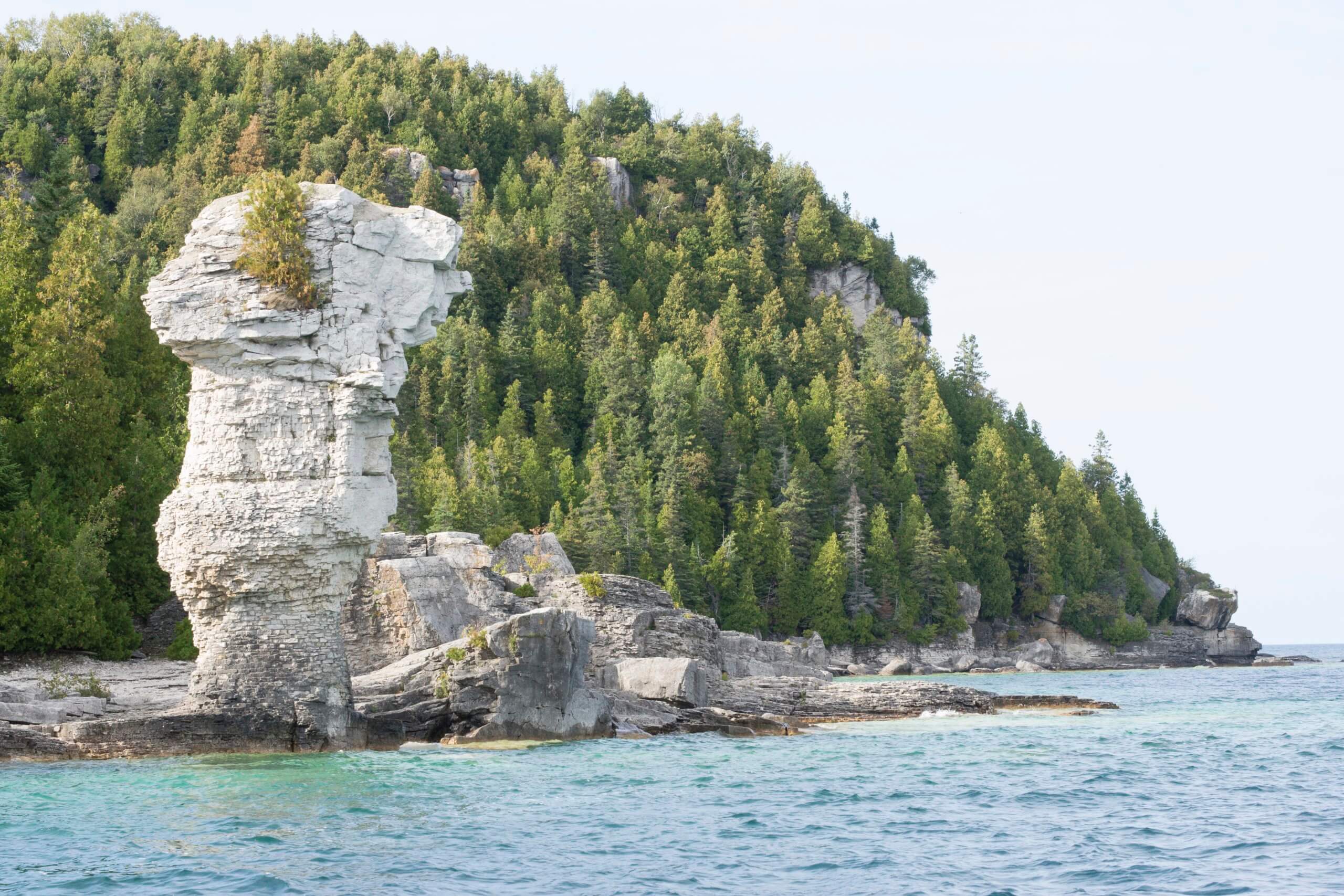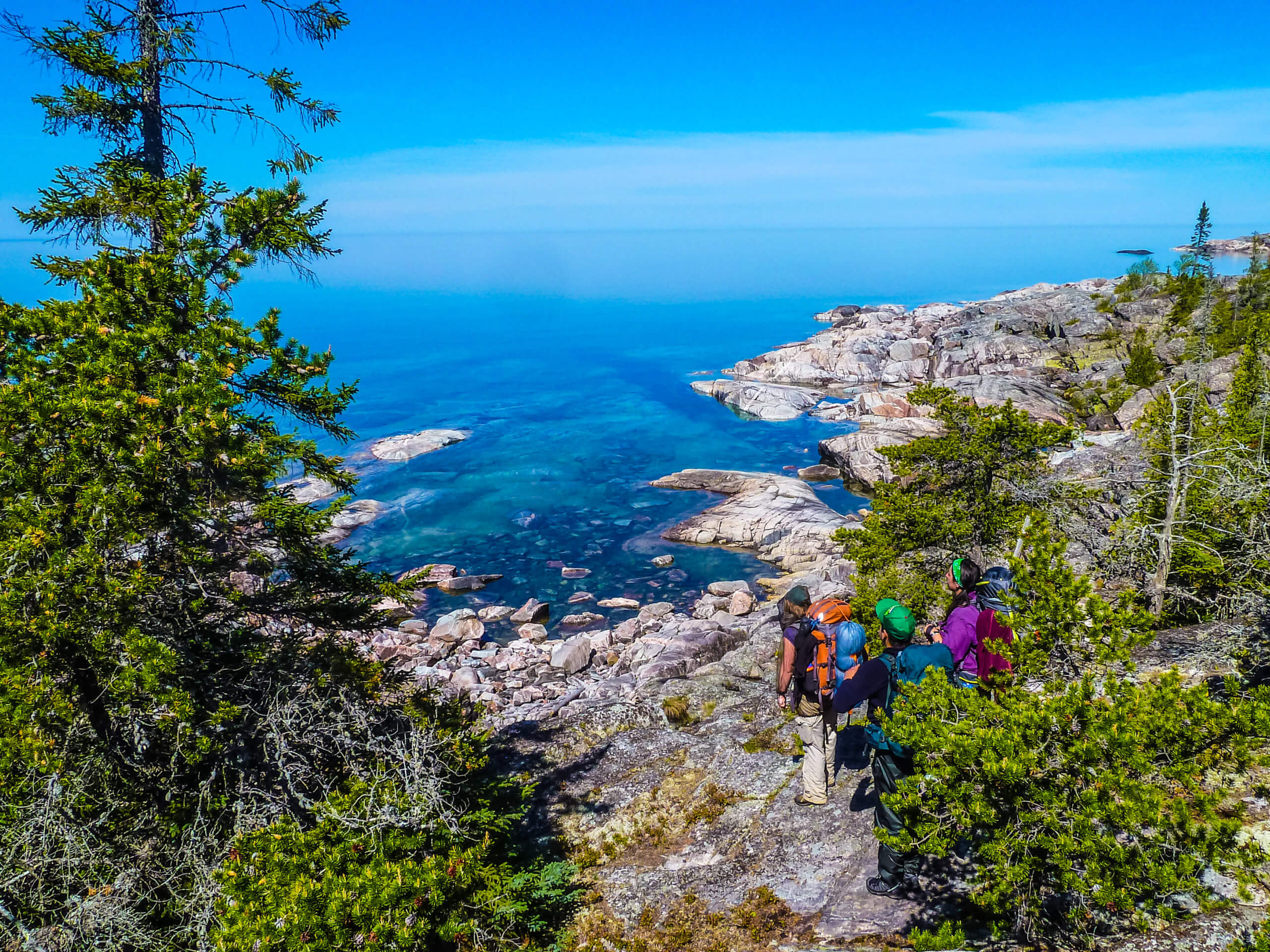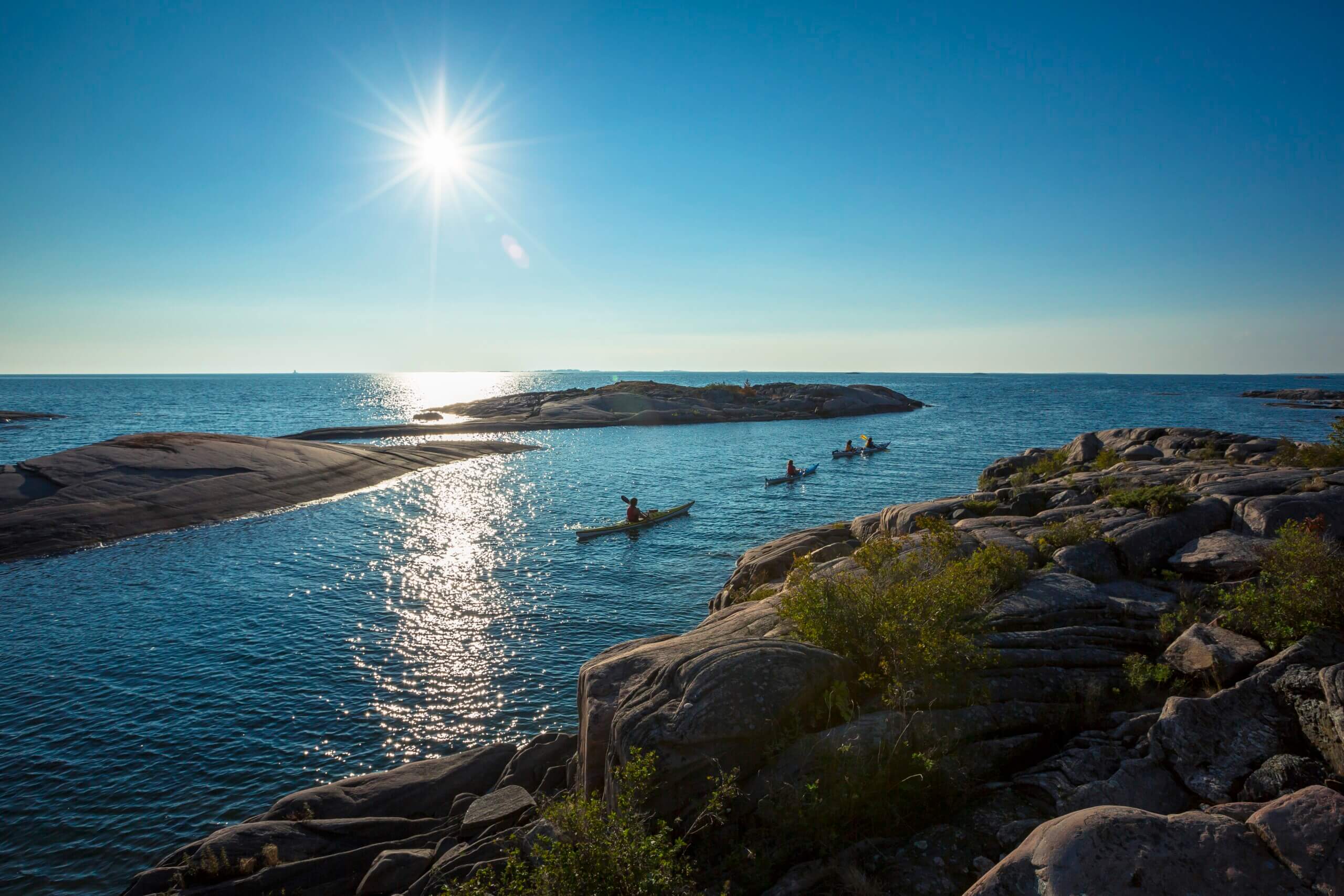The National Parks Of Georgian Bay
The body of water that makes up Ontario’s Georgian Bay has sometimes been called the sixth Great Lake. With thousands of kilomtres of shoreline and a size not much smaller than Lake Ontario, it is easy to see why. The bay, however, is the northeastern arm of Lake Huron, joined to the second largest Great Lake by the North Channel where the Bruce Peninsula and Manitoulin Island sit. Despite being part of Lake Huron, Georgian Bay has a unique ecology and distinct landscape.
If you’ve ever explored Georgian Bay, you’ll know it is characterized by rocky outcrops, clear blue water and windswept pines. It is home to iconic provincial parks such as Killbear and Killarney as well as Craigsleith and Awenda. But the bay also houses two of Ontario’s national parks — the Georgian Bay Islands National Park and the Bruce Peninsula National Park — as well as the Fathom Five National Marine Park. Read on to learn about each of these parks and how you can explore them.
To learn more about the unique ecology of Georgian Bay, visit the Georgian Bay Biosphere Reserve.

A scenic sunset at Honeymoon Bay on Beausoleil Island in Georgian Bay Islands National Park. Photo by Parks Canada / Ethan Meleg
Georgian Bay Islands National Park
The world’s largest freshwater archipelago is located in Ontario’s Georgian Bay, with approximately 30,000 islands making up the region. Georgian Bay Islands National Park protects a portion of this chain of islands. It is the smallest national park in Canada and only accessible by water. Those who come to its shores will find shady wooded paths, stunning water views and secluded places to explore.
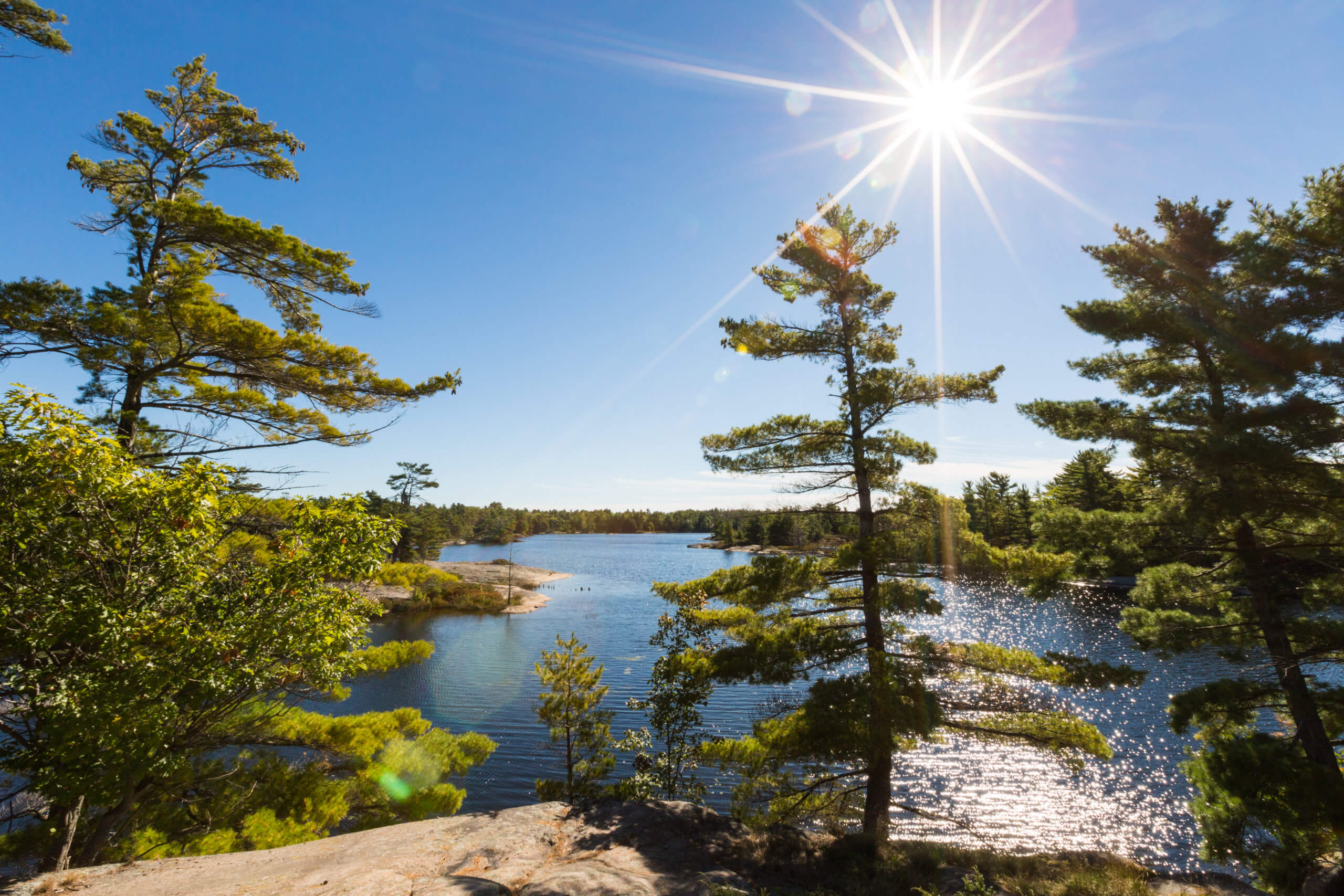
White pine trees, granite outcrops and blue water make great scenery along the Fairy Lake Trail in Georgian Bay Islands National Park. Photo by Parks Canada/Ethan Meleg
How to get to Georgian Bay Islands National Park
If you’re looking for Georgian Bay Islands National Park, you’ll find it tucked away in the eastern shores of the bay near Honey Harbour in Muskoka. Since this is a water-access-only park, you’ll have to plan ahead in order to visit. The park consists of 63 islands that are quite spread out, but the only island that allows camping and has amenities is the largest in the area — Beausoleil Island. To get here you can take your own boat or kayak, hop on a water taxi or book a spot on the park’s boat shuttle called the DayTripper.
The DayTripper leaves daily from Honey Harbour (2611 Honey Harbour Road) between Victoria Day weekend in May and Thanksgiving in October. Reservations are required. This boat trip makes for a fabulous daylong adventure. If you have reservations to camp on the island in one of the Parks Canada roofed accommodations (more on that below), a spot on the DayTripper is included and pre-arranged.
Things to do at Georgian Bay Islands National Park
Camping
The park has multiple options for camping on Beausoleil Island. There are seven campgrounds that offer a more primitive and secluded experiences — just a tent pad or wooden platform to pitch your tent, a picnic table and a fire box — and one campground (called Cedar Spring) that has 45 semi-serviced sites for tents only. Here you’ll find flush toilets and showers as well as potable water and cooking shelters.
If trekking on a water taxi with your tent doesn’t appeal to you, Parks Canada also offers a few roofed accommodations at Georgian Bay Islands National Park. Waterfront cabins are available for rent: there are six cabins located at Cedar Springs and four at Christian Beach. These cabins come with all the basics, such as a bed, table, chairs, lights and cooking gear. Cedar Springs campground also has five oTENTiks for rent. These are permanent shelters that are like a cross between an A-frame cabins and a prospector tent. They come with two queen-sized and one double-sized bed.
Exploring the islands
Whether you are staying overnight or just coming for the day, Georgian Bay Islands National Park has tons of activities to keep you busy. The northern part of Beausoleil Island has amazing hikes through the Canadian Shield, while the southern portion has paths through mixed forests. Try the Rockview hike in the north for views of inlets and connect to the Georgian Trail (which begins in the south) to see the historic Brebeuf lighthouse.
If you are interested in swimming, there are a few sheltered bays in the northern part of the island and sandy beaches can be found along the eastern shores. Bring along a picnic as there are no stores on the island. Cycling is also very popular and there are three trails that are open for biking. Cedar Spring Visitor Centre has adult bikes for rent (keep in mind that the DayTripper boat shuttle does not allow equipment such as bikes, canoes or paddleboards onboard so plan to rent or take a water taxi that can accommodate your gear).
Bruce Peninsula National Park
The Bruce Peninsula juts out from its base in southern Ontario into Lake Huron, forming a barrier between Georgian Bay on the one side and the open waters of Lake Huron on the other. At the tip of the peninsula is Bruce Peninsula National Park, a stunning park with turquoise water and a dramatic rocky shoreline. The backbone of the park is the Niagara Escarpment, a UNESCO World Biosphere Reserve.

The rocky limestone shoreline of Georgian Bay viewed from the backcounty campsites located at Stormhaven. Photo by © Parks Canada / Corbi Sharpe
Getting to Bruce Peninsula National Park
The Bruce Peninsula National Park is located in Tobermory and is easily accessible year round along Highway 6. You can also reach the park on the MS Chi-Cheemaun ferry from Manitoulin Island during the spring, summer and fall. The park is open year round and can get quite busy especially during the warmer months. If you are planning a visit between April 30 and October 31 to the Grotto or between June 17 and September 5 to the Halfway Log Dump (more on these areas below) then you are required to make a reservation for parking your vehicle. These reservations are limited and fill up quickly, so plan ahead.
Things to do at Bruce Peninsula National Park
The Grotto & the Halfway Log Dump
The Georgian Bay shoreline in the Bruce Peninsula National Park includes two very popular areas: the Grotto and the Halfway Log Dump. The Grotto is a natural cave located near Indian Head Cove, which is a gorgeous rocky bay. It is a 1-km hike from the parking lot (as noted above, reservations are required in the warmer months) to reach the Grotto. The Halfway Log Dump is also a 1-km hike from its parking lot at the end of Emmett Lake Road and here you will find a rugged shoreline that juts out into the beautiful blue waters below. The boulders in this section of the park allow for bouldering — a type of rock climbing.
Other activities in Bruce Peninsula National Park
While the Grotto is extremely popular, this national park has many other incredible places to explore. The easiest way to see it all is to stay overnight at the Cyprus Lake Campground, which features 232 campsites and 10 yurts. Reservations required. Check the Parks Canada website for information on booking campsites.
Beach enthusiasts will love this park, which offers access to both Georgian Bay and Lake Huron proper. On the Lake Huron side, the Singing Sands beach has shallow water and a sandy shore with fragile sand dunes and a boardwalk. This is a popular spot for families. On the Georgian Bay side, you’ll find deep waters with rocky shores. Besides the popular Indian Head Cove, you could also head to the Little Cove beach, which has a picturesque small stone-covered beach (reservations required for the parking lot). The park also has several inland lakes that make for great paddling.
If you are a hiker, you’ll find plenty of great trails in Bruce Peninsula National Park, as well as a direct connection to the start of the Bruce Trail for even more hiking option. There is also a cycling trail in the park.
Related: Read our Guide to Hiking Ontario’s Bruce Trail for more information on this epic hiking route.
Fathom Five National Marine Park
Imposing cliff formations created millions of years ago, rare orchids, centuries-old shipwrecks and forests that push to the edge of the turquoise water characterize the marine conservation area known as Fathom Five National Marine Park. Located just a skip away from the Bruce Peninsula National Park, this unique aquatic ecosystem is home to the famous Flowerpot Island and can be explored on a day trip by boat or as an overnight backcountry camping trip.
Getting to Fathom Five National Marine Park
Fathom Five National Marine Park is located on the northern tip of the Bruce Peninsula in Tobermory, next to the Bruce Peninsula National Park. The Visitor’s Centre is located on the mainland in Tobermory and you can stop in here to grab any required permits. From here, you can take a private boat tour to explore nearby Flowerpot Island or use your own boat or kayak to explore the area.
Things to do in Fathom Five National Marine Park
Camping, hiking and diving at Fathom Five
Only one camping location exists in Fathom Five and that is on Flowerpot Island, approximately 6.5 km from Tobermory. Here you’ll find six tent sites with wooden platforms, all within a short walk from Beachy Cove — the main dock on the island. Reservations are required.
Flowerpot Island gets its name from the 400-million-year-old dolomite rock pillars that line the coastline. Whether you choose to camp here or just take one of the popular day cruises, there is lots to see and do. Hike the flowerpots, visit the historic lightstation (maintained by volunteers), see a cool cave and have a picnic on the rocks overlooking Georgian Bay. While there are no sandy beaches on the island, you can still get in the water here for a swim or snorkel. More ambitious hikers can do a loop of the island through some beautiful rocky terrain.
When it comes to freshwater diving, it’s hard to beat Fathom Five. Not only does the clear water offer unparalleled views of ancient geological formations including cliffs and caves, but there are also 20 historic shipwrecks to explore.
Looking for a roadtrip that will help you discover the beauty of Georgian Bay? Try Landsby’s Georgian Bay Coasal Route.
Ontario’s national parks are part of a much larger network of natural spaces that exist in every province and territory in this country. These range from mountains and plains to boreal forests and glaciers. No matter where you live or visit within Canada, there’s sure to be a national park nearby to explore.
Related: Read our Landsby Journal posts about the incredible Torngat Mountains National Park and the Prince Edward Islands National Park.

